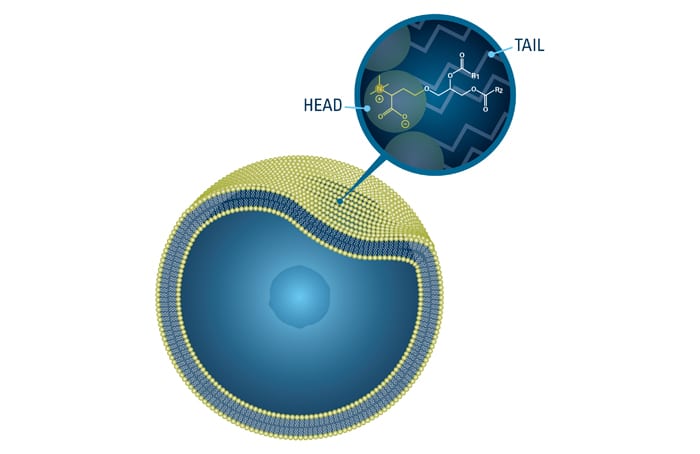The cell membranes of single-celled marine life are mostly made of fatty compounds called lipids. They have a distinctive structure with hydrophilic (water-loving) “heads” and hydrophobic (water-avoiding) “tails” and are aligned in a double layer, with the heads facing toward the watery interior and exterior of the cell. This creates a membrane that acts as a gateway for fluids and other molecules passing in either direction. Different kinds of microbes can have different types of lipids in their membranes. MIT/WHOI Joint Program graduate student Kim Popendorf has studied lipids in Ben Van Mooy‘s lab, and is working to devise new tools to help identify marine microbes and the metabolic processes they use to live and grow.
(Illustration by Amy Caracappa-Qubeck, Woods Hole Oceanographic Institution)
Image and Visual Licensing
WHOI copyright digital assets (stills and video) on this website can be licensed for non-commercial use upon request and approval. Please submit your request via our Media Request Form.
For assistance or accessibility accommodations, call (508) 289-2647.
